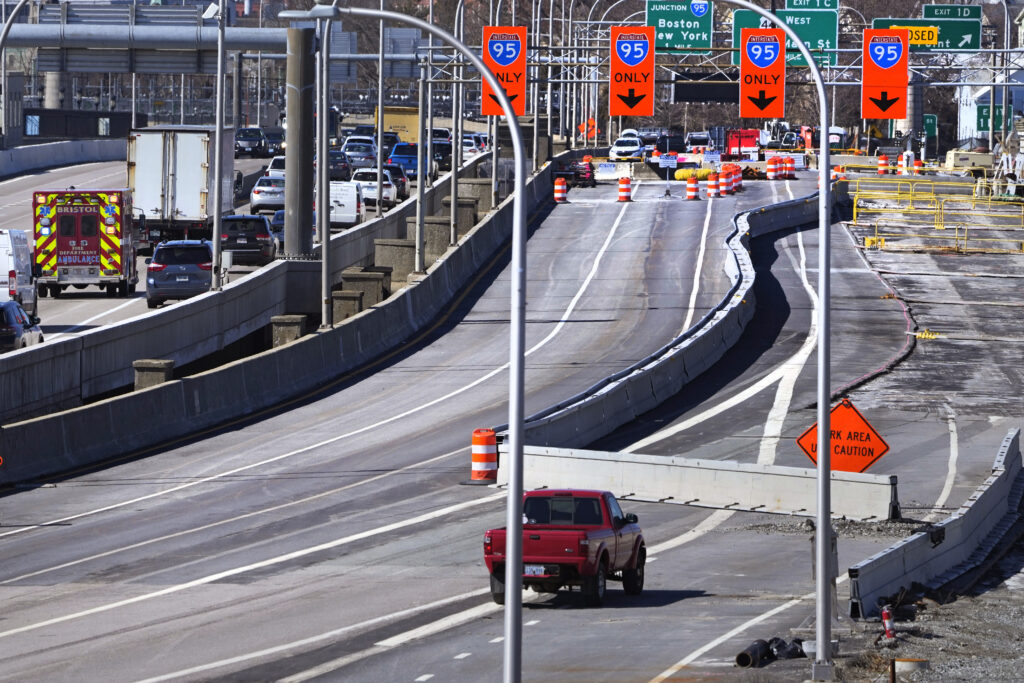The rapid collapse of a Baltimore bridge that was struck by large cargo ship highlighted the importance that bridges play in the daily lives of many Americans.
Six construction workers who were on the bridge are presumed dead. The drivers of more than 30,000 vehicles that crossed the bridge daily must find a new route around or over the Patapsco River. And shipments at the Port of Baltimore will be shut down for some time, forcing numerous businesses to find alternative means of getting their goods in and out of the U.S.
Though the Interstate 695 bridge in Baltimore had been in satisfactory condition before the shipping collision, thousands of other bridges stand in poor shape across the U.S. due to aging piers, beams and key structural components.
Here are some takeaways from an Associated Press analysis of the more than 621,000 roadway bridges that are more than 20 feet long and are listed in the federal government’s National Bridge Inventory.
THOUSANDS OF POOR BRIDGES
Inspectors rate bridges using a 0-9 scale, with 7 or above considered “good.” A “poor” rating reflects a 4 or below on any portion of a bridge’s main components. A mid-range rating is considered “fair.”
About 42,400 U.S. bridges are in poor condition, carrying about 167 million vehicles each day, according to the federal government. Those poor bridges are on average 70 years old.
Of those poor bridges, four-fifths have problems with their substructures (the legs holding them up) or their superstructures (the arms supporting their load). And more than 15,800 of the poor bridges also were listed in poor shape a decade ago, according to AP’s analysis.
Iowa has the greatest number of poor bridges, followed by Pennsylvania, Illinois and Missouri.
WHY DO BRIDGES COLLAPSE?
Though unusual, the collapse of the Francis Scott Key Bridge in Baltimore was not the first bridge to fall down after being struck by a ship. From 1960 to 2015, there were 35 major bridge collapses worldwide due to ship or barge collisions, with a total of 342 people killed, according to a 2018 report from the World Association for Waterborne Transport Infrastructure. Eighteen of those collapses happened in the United States.
Though also rare, bad bridges can eventually just collapse.
In January 2022, a bridge collapsed over Fern Hollow Creek in Pittsburgh, causing injuries but no deaths to the occupants of several vehicles that were on it. Federal investigators determined the bridge’s steel legs had corroded, creating visible holes, yet inspectors failed to calculate the severity of the problem and the city failed to follow repeated recommendations.
“This bridge didn’t collapse just by an act of God. It collapsed because of a lack of maintenance and repair,” National Transportation Safety Board member Michael Graham said.
A HIT TO THE ECONOMY
When bridges close or collapse, there are financial consequences.
Thirteen people died and 145 others were injured when an Interstate 35 bridge collapsed over the Mississippi River in Minneapolis in 2007. A state analysis estimated Minnesota’s economy lost $60 million in 2007-2008 due to increased travel time and operating costs for commuters and businesses.
Bridges in Providence, Rhode Island, and Tacoma, Washington, are currently closed because of safety concerns. Nearby businesses have taken a hit because motorists have diverted to other routes.
Marco Pacheco, who owns a liquor store along a main road in a Portuguese neighborhood of East Providence, said his business revenue is down 20% since the bridge closed late last year. But he’s even more concerned about the long-term consequences.
“That traffic doesn’t instantly come back. Folks have reshaped their patterns, their thought processes and so on,” Pacheco said.
Business owners in Washington shared similar concerns about the indefinite closure of the Fishing Wars Memorial Bridge in an industrial area near the Port of Tacoma. A nearby Interstate 5 bridge provides a good alternative, but that means many motorists zoom right past an exit ramp without thinking about the nearby businesses, such as a Harley-Davidson motorcycle store.
“Is there a peril that exists?” Harley-Davidson store owner Ed Wallace asked. “Yeah, absolutely, a very serious one for me as a business owner.”
FEDERAL FUNDING
A massive infrastructure law signed by President Joe Biden in 2021 directed $40 billion to bridges over five years — the largest dedicated bridge investment in decades. Transportation Secretary Pete Buttigieg said that law already is funding over 7,800 bridge projects.
But even that will make only a dent in an estimated $319 billion of needed bridge repairs nationwide, according to the American Road & Transportation Builders Association.
“The bottom line is that America’s bridges need a lot of work,” Buttigieg told the AP after visiting the closed Rhode Island bridge. He added: “The sooner we can address those significant bridges, the less likely they will be abruptly taken out of service, or worse, experience the risk of a collapse.”
(AP)











